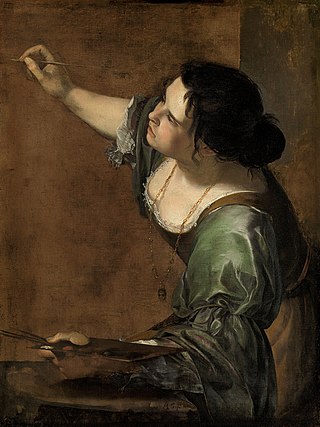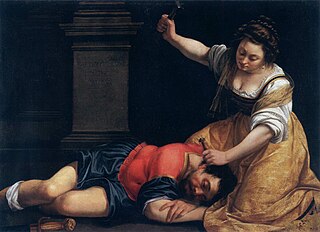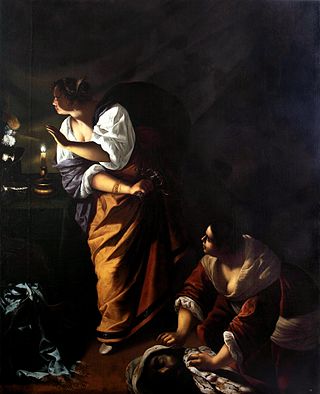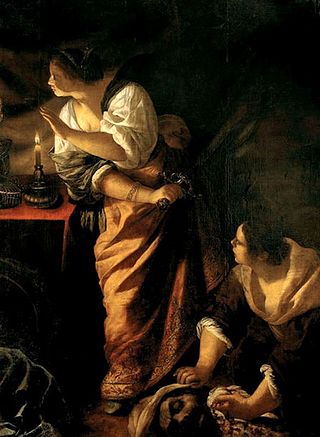Gallery
Paintings featured:
- Judith Beheading Holofernes by Artemisia Gentileschi
- The Death of Marat by Jacques-Louis David, imitated in bathtub scene
- Martyrdom of St. Sebastian by Giovanni Bassi (and many others), alluded in death scene
| Painted Lady | |
|---|---|
| Genre | Drama, murder mystery |
| Written by | Alan Cubitt |
| Directed by | Julian Jarrold |
| Starring | Helen Mirren Karl Geary Iain Glen Franco Nero Michael Maloney Lesley Manville Iain Cuthbertson Barry Barnes Michael Liebmann John Kavanagh |
| Composer | Peter Salem |
| Country of origin | United Kingdom |
| Original language | English |
| No. of series | 1 |
| No. of episodes | 2 |
| Production | |
| Executive producers | Gub Neal Rebecca Eaton |
| Producer | Emma Burge |
| Production locations | Dublin, Ireland |
| Running time | 101 minutes (including adverts) |
| Production company | WGBH Boston in association with Granada Television |
| Original release | |
| Network | ITV |
| Release | 7 December – 8 December 1997 |
Painted Lady is a 1997 murder mystery drama starring Helen Mirren, involving art theft. It co-starred Franco Nero, Karl Geary and Iain Glen, and was directed by Julian Jarrold.
The role was created specifically for Mirren, as a means for her to try something a bit different from her Inspector Tennison character on the popular Prime Suspect series. The series was a collaborative effort of Granada Television and PBS. It was broadcast on ITV from 7 to 8 December 1997 in the UK and in the US on PBS's Masterpiece Theatre 26 April 1998.
Maggie Sheridan, a washed-up blues vocalist from the 1960s who had long since stopped performing, had settled into a comfortable life on the Dublin estate of Sir Charles Stafford, the father of her childhood friend. When Sir Charles is murdered in what appears to be a bungled robbery (in which a valuable sixteenth-century painting is stolen), Maggie is drawn into the world of illegal art trade to solve the mystery and avenge her friend's murder, donning the persona of Polish Countess Magdelena Kreschinskaá.
The story centres around Judith Beheading Holofernes , the masterwork of Artemisia Gentileschi, who was a 17th-century female Italian painter who survived a rape. The painting fictionally travels to Dublin and New York City, and Gentileschi's tragic story eventually figures into the plot. There are other visual references to notable paintings in the film.
Paintings featured:

Cristofano Allori was an Italian painter of the late Florentine Mannerist school, painting mostly portraits and religious subjects.

Artemisia Lomi or Artemisia Gentileschi was an Italian Baroque painter. Gentileschi is considered among the most accomplished 17th-century artists, initially working in the style of Caravaggio. She was producing professional work by the age of 15. In an era when women had few opportunities to pursue artistic training or work as professional artists, Gentileschi was the first woman to become a member of the Accademia di Arte del Disegno in Florence and she had an international clientele.

Orazio Lomi Gentileschi (1563–1639) was an Italian painter. Born in Tuscany, he began his career in Rome, painting in a Mannerist style, much of his work consisting of painting the figures within the decorative schemes of other artists.

Judith Beheading Holofernes is a painting of the biblical episode by Caravaggio, painted in c. 1598–1599 or 1602, in which the widow Judith stayed with the Assyrian general Holofernes in his tent after a banquet then decapitated him after he passed out drunk. The painting was rediscovered in 1950 and is part of the collection of the Galleria Nazionale d'Arte Antica in Rome. The exhibition 'Dentro Caravaggio' Palazzo Reale, Milan, suggests a date of 1602 on account of the use of light underlying sketches not seen in Caravaggio's early work but characteristic of his later works. The exhibition catalogue also cites biographer artist Giovanni Baglione's account that the work was commissioned by Genoa banker Ottavio Costa.

Elisabetta Sirani was an Italian Baroque painter and printmaker who died in unexplained circumstances at the age of 27. She was one of the first women artists in early modern Bologna, who established an academy for other women artists.

The account of the beheading of Holofernes by Judith is given in the deuterocanonical Book of Judith, and is the subject of many paintings and sculptures from the Renaissance and Baroque periods. In the story, Judith, a beautiful widow, is able to enter the tent of Holofernes because of his desire for her. Holofernes was an Assyrian general who was about to destroy Judith's home, the city of Bethulia. Overcome with drink, he passes out and is decapitated by Judith; his head is taken away in a basket.

Judith Slaying Holofernes is a painting by the Italian early Baroque artist Artemisia Gentileschi, completed in 1612-13 and now at the Museo Capodimonte, Naples, Italy.

Self-Portrait as the Allegory of Painting, also known as Autoritratto in veste di Pittura or simply La Pittura, was painted by the Italian Baroque artist Artemisia Gentileschi. The oil-on-canvas painting measures 98.6 by 75.2 centimetres and was probably produced during Gentileschi's stay in England between 1638 and 1639. It was in the collection of Charles I and was returned to the Royal Collection at the Restoration (1660) and remains there. In 2015 it was put on display in the "Cumberland Gallery" in Hampton Court Palace.

Judith and the Head of Holofernes is an oil painting by Gustav Klimt, painted in 1901. It depicts the biblical figure Judith holding the head of Holofernes after beheading him. The beheading and its aftermath have been commonly portrayed in art since the Renaissance, and Klimt himself would paint a second work depicting the subject in 1909.
Judith and Holofernes may refer to:

Susanna and the Elders is a 1610 painting by the Italian Baroque artist Artemisia Gentileschi and is her earliest-known signed and dated work. It was one of Gentileschi's signature works. She painted several variations of the scene in her career. It hangs at Schloss Weißenstein in Pommersfelden, Germany. The work shows a frightened Susanna with two men lurking above her while she is in the bath. The subject matter comes from the deuterocanonical Book of Susanna in the Additions to Daniel. This was a popular scene to paint during the Baroque period.

Judith and her Maidservant is a c. 1615 painting by the Italian baroque artist Artemisia Gentileschi. The painting depicts Judith and her maidservant leaving the scene where they have just beheaded general Holofernes, whose head is in the basket carried by the maidservant. It hangs in the Pitti Palace, Florence.
This is an ongoing bibliography of work related to the Italian baroque painter Artemisia Gentileschi.

Judith and Her Maidservant is one of four paintings by the Italian baroque artist Artemisia Gentileschi that depicts the biblical story of Judith and Holofernes. This particular work, executed in about 1623 to 1625, now hangs in the Detroit Institute of Arts. The narrative is taken from the deuterocanonical Book of Judith, in which Judith seduces and then murders the general Holofernes. This precise moment illustrates the maidservant Abra wrapping the severed head in a bag, moments after the murder, while Judith keeps watch. The other three paintings are now shown in the Museo di Capodimonte in Naples, the Palazzo Pitti in Florence, and the Musée de la Castre in Cannes.

Jael and Sisera is a painting by the Italian Baroque artist Artemisia Gentileschi, executed around 1620.

Saint Catherine of Alexandra is a painting by the Italian Baroque artist Artemisia Gentileschi. It is in the collection of the Uffizi, Florence. Gentileschi likely used the same cartoon or preparatory drawing to create both this painting and the Self-Portrait as Saint Catherine of Alexandria (1615–1617), now in the National Gallery, London.

Judith and Her Maidservant is a painting by the Italian baroque artist Artemisia Gentileschi. Executed sometime between 1645 and 1650, it hangs in the Museo di Capodimonte in Naples. The story comes from the deuterocanonical Book of Judith, in which Judith seduces and then assassinates the general Holofernes, who had besieged Judith's town. The exact moment depicted takes place after the murder when her maidservant places the severed head in a bag, while Judith checks around her.

Judith and Her Maidservant is a painting by the Italian baroque artist Artemisia Gentileschi. Executed sometime between 1640 and 1645, it hangs in the Musée de la Castre in Cannes.

Judith Slaying Holofernes c. 1620, now at the Uffizi Gallery in Florence, is the renowned painting by Baroque artist Artemisia Gentileschi depicting the assassination of Holofernes from the apocryphal Book of Judith. When compared to her earlier interpretation from Naples c. 1612, there are subtle but marked improvements to the composition and detailed elements of the work. These differences display the skill of a cultivated Baroque painter, with the adept use of chiaroscuro and realism to express the violent tension between Judith, Abra, and the dying Holofernes.

Judith and her Maidservant with the Head of Holofernes is a painting by the Italian artist Artemisia Gentileschi, created in 1639-1640. It was one of many paintings by Gentileschi that treats the theme of Judith, who beheads the Assyrian general Holofernes, who was planning to destroy Judith's home city of Bethulia.